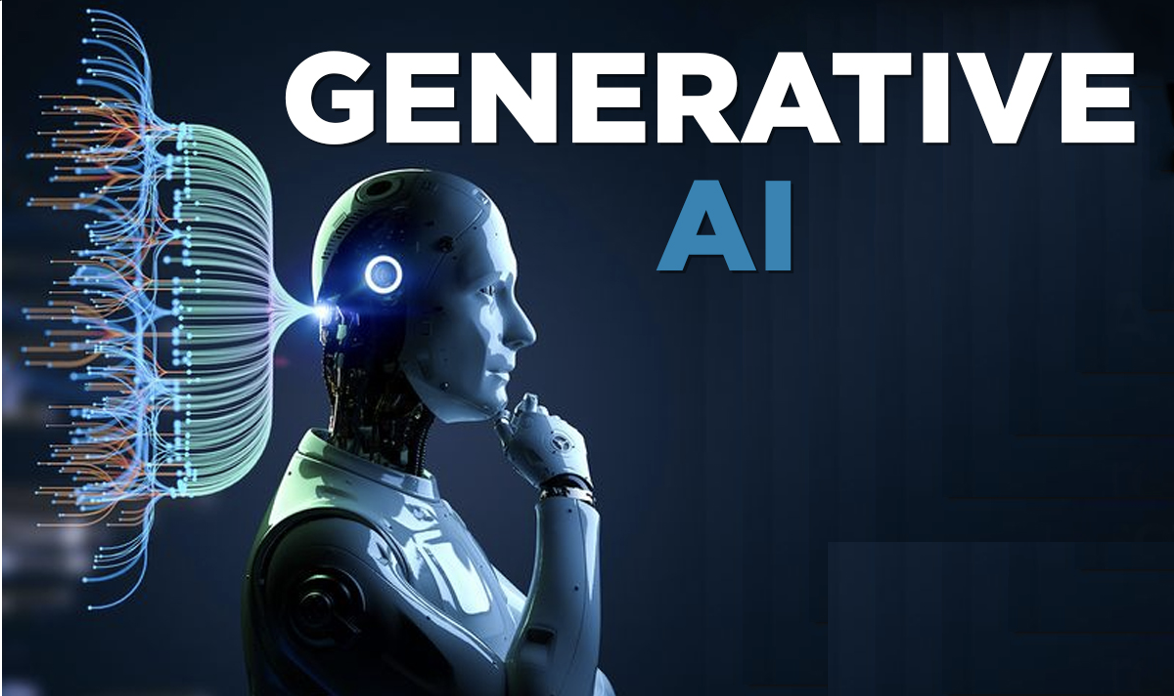The Role of Generative AI in Transforming Industries

Generative AI, a cutting-edge branch of artificial intelligence, has been gaining significant attention across various sectors. But what is generative AI exactly? In simple terms, generative AI refers to AI systems that use algorithms to generate new content, designs, and data that resemble the input they’ve been trained on. These generative models are capable of creating everything from realistic images and videos to text, code, and even sound. This technology is revolutionizing industries worldwide, driving innovation, and opening up new possibilities for businesses.
In this blog, we’ll explore the meaning of generative AI and its impact on key industries, as well as examine when and how generative AI became available as open source, allowing broader access to this powerful technology.
What is Generative AI?
Generative AI meaning: At its core, generative AI is a type of artificial intelligence that doesn’t just analyze existing data but generates new data that mimics the patterns of the input data. Using generative models, AI can create outputs that are original yet similar to the training data. These models are used in various applications, such as creating artwork, writing code, developing game environments, and even simulating real-world scenarios.
An important milestone in the development of generative AI came when certain models were made open source, allowing developers and researchers to experiment with and improve upon them. This move greatly accelerated the advancement of generative technologies.
When Was Generative AI Open Source?
Generative AI has been evolving for decades, but it gained widespread attention when models like GPT (Generative Pretrained Transformer) were made partially open source by organizations such as OpenAI. In particular, GPT-2 was initially withheld due to concerns about potential misuse but was later released as open source in November 2019. The decision to open-source such models sparked widespread experimentation and application development across industries, giving rise to a new wave of generative tools.
By making generative models available to the broader community, industries and innovators have been able to leverage this technology for a wide range of applications, from art and content creation to healthcare and finance. The open-source movement has played a critical role in advancing generative AI to where it is today.
Now, let’s explore the key ways in which generative AI is transforming industries.
1. Content Creation and Media
The media and entertainment industries are some of the most visible adopters of generative AI. Platforms like DALL·E and MidJourney, both of which are based on generative models, can generate images based on text prompts, allowing artists and creators to explore new forms of creativity. Video game developers use generative AI to create realistic characters and environments, significantly reducing manual design efforts.
In the film industry, generative AI is also playing a key role in visual effects, enabling studios to generate highly realistic CGI characters and backgrounds. Content recommendation systems, driven by AI, use predictive algorithms to personalize media experiences for users, further showcasing the impact of generative models.
Key Impact:
- Automated content generation for films, games, and social media.
- New tools for artists to explore creative designs.
- Faster production and editing processes.
2. Healthcare and Drug Discovery
Generative AI is revolutionizing healthcare, particularly in areas like drug discovery and personalized medicine. With generative models, AI can analyze vast amounts of data from clinical trials, patient records, and genetic information, predicting new drug formulations and speeding up the traditionally lengthy process of drug development.
Moreover, generative AI helps researchers model complex biological systems, enabling the design of personalized treatment plans based on an individual’s genetic profile. These advancements promise to transform how we approach diseases such as cancer, Alzheimer’s, and autoimmune disorders.
Key Impact:
- Accelerated drug discovery and testing.
- Personalized treatments based on patient data.
- Enhanced diagnostic tools for early disease detection.
3. Manufacturing and Product Design
Generative AI is also transforming manufacturing by introducing smarter, more efficient product design processes. With generative design, engineers input specific requirements—such as material, weight, or functionality—and let AI create optimized product designs. This innovative process, powered by generative models, is revolutionizing industries like automotive, aerospace, and consumer goods.
Additionally, AI-powered systems help optimize production lines, reduce waste, and improve quality control. Predictive maintenance, a key benefit of generative AI, helps manufacturers prevent machine breakdowns and improve overall efficiency.
Key Impact:
- Optimized product designs that enhance performance.
- Predictive maintenance for reducing machine downtime.
- Customized manufacturing solutions.
4. Finance and Banking
Generative AI is transforming the finance sector by helping institutions manage data, detect patterns, and predict trends. One of the key applications of generative AI in finance is in fraud detection, where AI-generated simulations identify potential fraudulent activities before they occur, improving the overall security of banking systems.
In addition, generative models are used to create synthetic financial data that mimics real-world market behavior, enabling better financial forecasting and risk management. Traders and analysts can simulate various scenarios to make more informed decisions based on these models.
Key Impact:
- Enhanced fraud detection and prevention systems.
- More accurate financial modeling and risk assessment.
- Improved customer service with AI-driven chatbots.
5. Retail and E-commerce
In retail, generative AI is reshaping the customer experience by offering highly personalized shopping recommendations. AI systems analyze customer data to generate tailored product suggestions, targeted advertising, and customized promotions, improving customer engagement and increasing conversion rates.
Moreover, generative models allow retailers to offer virtual product designs and augmented reality experiences, enabling customers to visualize items such as clothing, furniture, or home décor in 3D before purchasing.
Key Impact:
- Personalized shopping recommendations.
- Virtual product design and augmented reality experiences.
- Improved supply chain management.
6. Architecture and Construction
In architecture and construction, generative AI is optimizing the design and building processes. AI tools help architects explore different design variations, optimizing for factors like materials, cost, and environmental impact. Generative models also predict how different designs will perform in real-world conditions, such as weather or seismic activity.
For construction, generative AI automates workflows, reduces errors, and improves project management efficiency. These advancements lead to faster, more sustainable construction projects that meet industry standards.
Key Impact:
- Optimized architectural designs with environmental considerations.
- Reduced construction time with AI-driven planning.
- Sustainable building practices with eco-friendly materials.
7. Education and Training
Generative AI is transforming education by enabling personalized learning experiences. AI-driven systems generate custom lesson plans, exercises, and assessments tailored to a student’s learning pace and skill level, ensuring more effective learning.
In corporate training, generative models create targeted training programs based on employee performance, job role, and skill set. This ensures that employees receive relevant training that directly improves their productivity and expertise.
Key Impact:
- Personalized learning plans for students.
- AI-generated training programs for corporate development.
- Enhanced engagement with virtual and adaptive learning platforms.
Conclusion
Generative AI is not only a technological breakthrough but also a transformative force across industries. From healthcare to manufacturing, generative models are driving innovation, increasing efficiency, and creating new opportunities for businesses to thrive. With the availability of open-source generative AI, more companies and individuals can experiment with these powerful tools, contributing to rapid advancements in AI technology.









